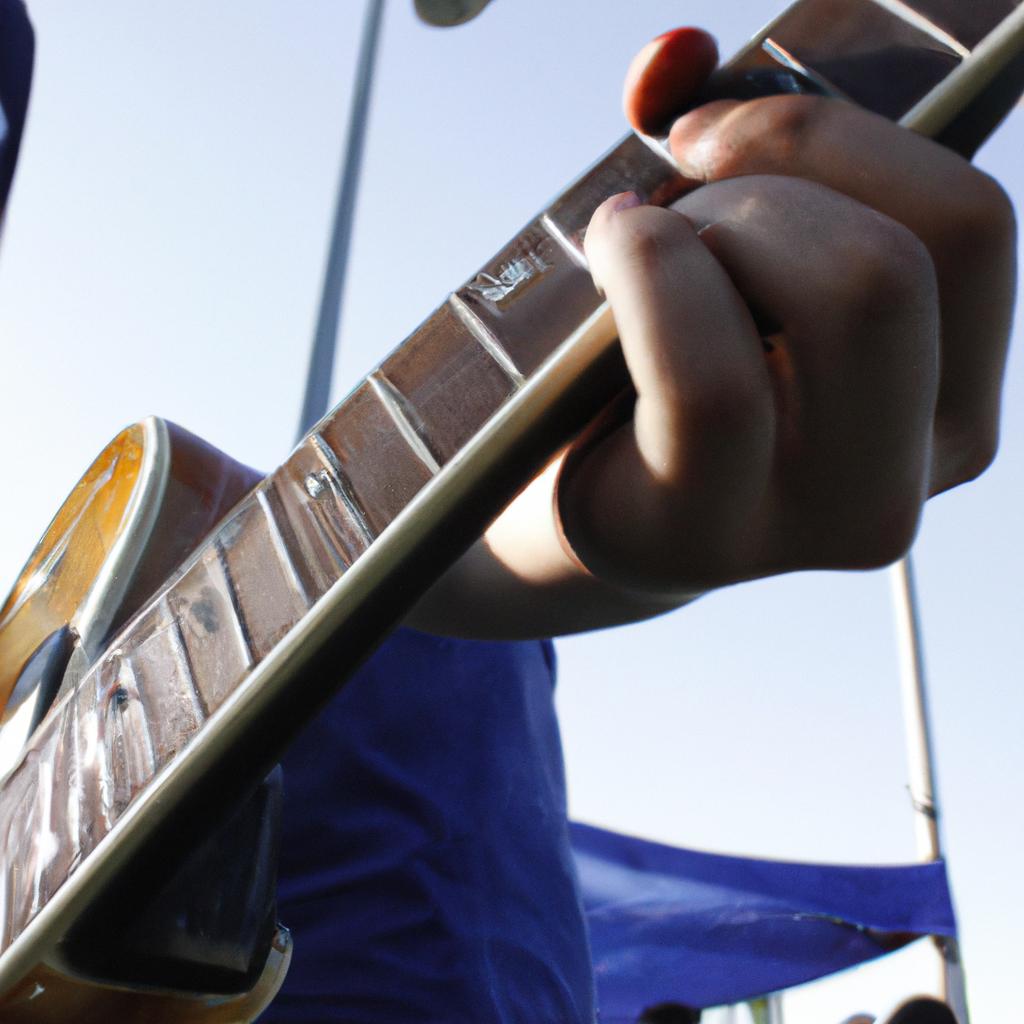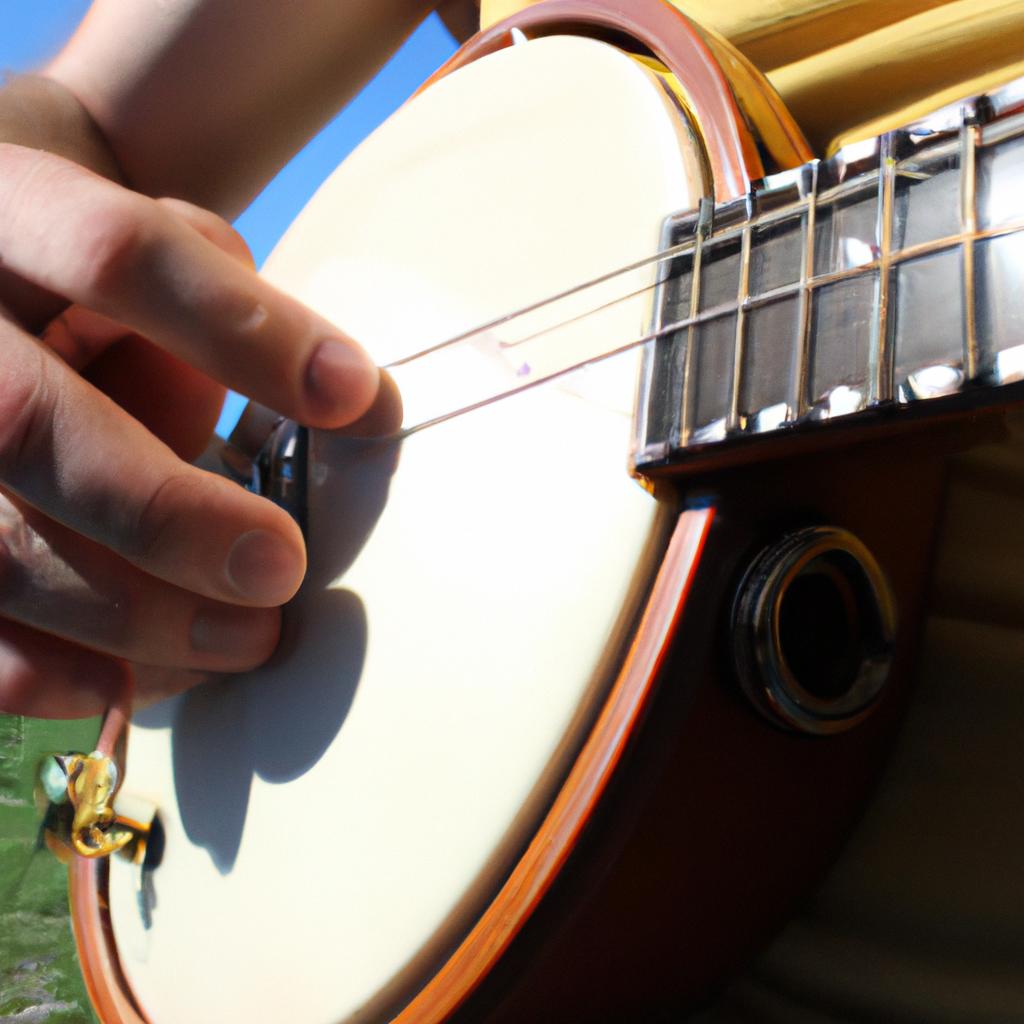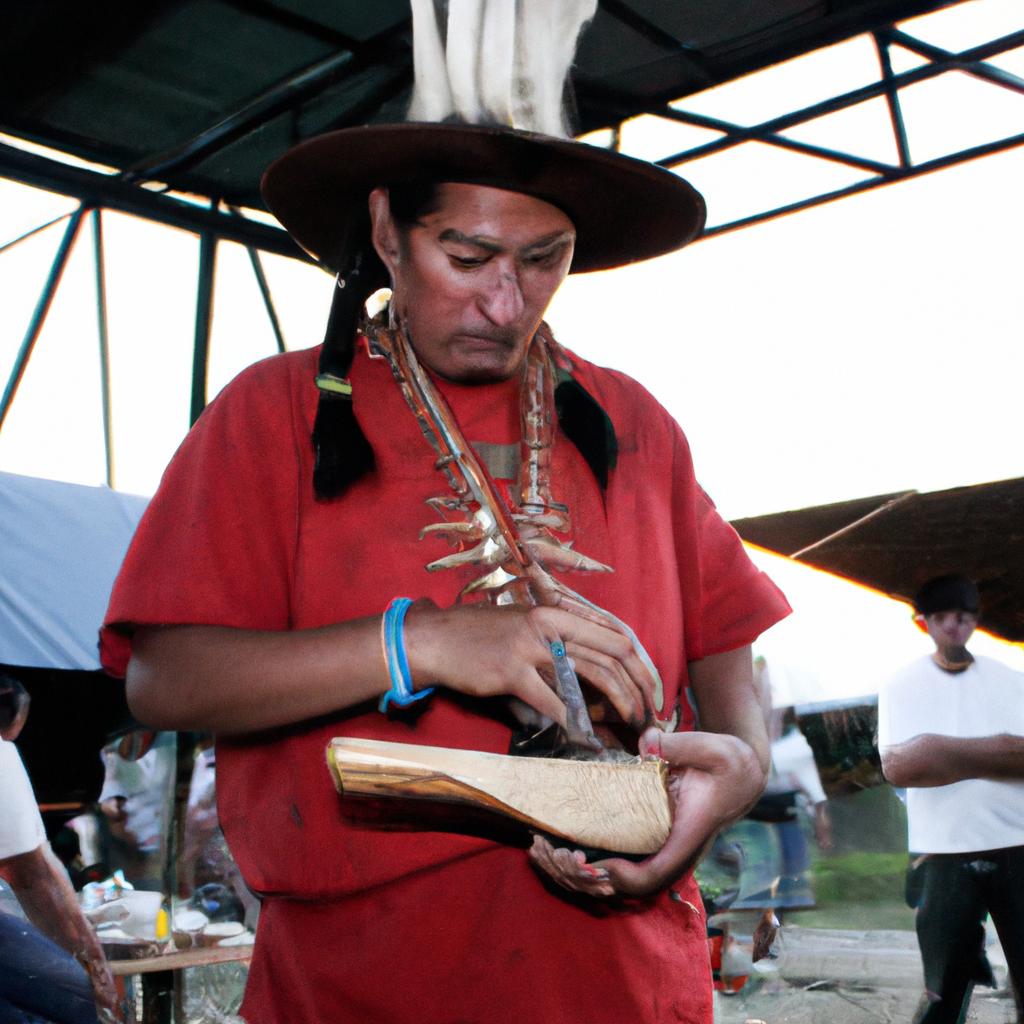Jazz festivals in North America have become an integral part of the cultural landscape, showcasing a rich tapestry of musical talent and providing audiences with an immersive experience into the world of jazz. These festivals serve as platforms for musicians to share their innovative compositions and improvisations, while also fostering a sense of community among performers and enthusiasts alike. Indeed, they offer a unique opportunity to witness the convergence of diverse styles and influences within this genre, making each festival a distinct celebration of jazz.
For instance, let us consider the hypothetical case study of the Montreal International Jazz Festival in Canada. This renowned event has been captivating music lovers since its inception in 1980, drawing thousands of attendees from across the globe year after year. With over 500 concerts spread across multiple stages throughout the city, this festival not only showcases established jazz legends but also provides a platform for emerging artists to showcase their talents. The Montreal International Jazz Festival serves as a testament to how these events can transform urban spaces into vibrant hubs that pulsate with melodious rhythms and harmonies.
Moreover, such festivals transcend mere auditory experiences by encompassing various art forms that complement and enhance the overall ambiance. Visual displays, dance performances, educational workshops, and interactive installations further enrich the festival atmosphere by immersing attendees in a multi-sensory journey. These added elements create a dynamic and immersive environment that engages all the senses and deepens one’s appreciation for jazz as an art form.
Additionally, jazz festivals often prioritize inclusivity and accessibility, striving to reach diverse audiences and foster a sense of community. Many festivals feature free outdoor concerts that allow people of all backgrounds to enjoy live music in a relaxed setting. This not only provides access to those who may not be able to afford ticketed events but also creates opportunities for cultural exchange and understanding.
Furthermore, jazz festivals frequently collaborate with local businesses, restaurants, and hotels, boosting tourism and contributing to the economic development of the host city. The influx of visitors generates revenue for the local economy while providing exposure for local artists and musicians.
In conclusion, jazz festivals in North America serve as vibrant showcases of musical talent, fostering community engagement, and promoting cultural exchange. They provide platforms for established and emerging artists alike to share their creativity with audiences from around the world. Through their inclusive programming, immersive experiences, and collaborations with various art forms, these festivals create unique celebrations of jazz that go beyond mere auditory pleasure.
The Origins of Jazz Festivals in North America
The Origins of Jazz Festivals in North America
Imagine a vibrant summer evening in New Orleans, the birthplace of jazz. The sound of trumpets and saxophones fills the air as a diverse crowd gathers at Congo Square for an annual celebration of music and culture. This is just one example of the many jazz festivals that have become a staple in North American cities. These events bring together musicians, enthusiasts, and tourists to celebrate the rich history and evolution of this iconic musical genre.
Jazz festivals emerged in North America during the early 20th century, coinciding with the rise of jazz as a popular form of entertainment. As African American communities migrated from the South to urban areas such as Chicago, New York City, and Los Angeles, they brought their unique musical traditions with them. With its roots deeply embedded in African rhythms and European harmonies, jazz quickly gained popularity among people from all walks of life.
The growth of jazz festivals can be attributed to several key factors. Firstly, these events provide a platform for both established and emerging artists to showcase their talents. By featuring a wide range of performers from various backgrounds and styles within the jazz genre, festivals offer audiences a diverse musical experience unlike any other. Moreover, these gatherings foster cultural exchange by bringing together individuals who share a common passion for music but may come from different cultures or regions.
To better understand the impact and significance of jazz festivals, consider the following emotional response evoked by attending such an event:
- Excitement: The anticipation builds as you enter the festival grounds – vibrant colors, enticing aromas wafting through food stalls, and lively chatter fill your senses.
- Connection: Engaging conversations flow effortlessly between strangers sharing stories about their favorite performances or discussing influential jazz artists.
- Inspiration: Watching talented musicians pour their heart into every note creates moments that inspire creativity and ignite passions within attendees.
- Memories: Long after the festival ends, cherished memories of music-filled nights and unforgettable performances act as a reminder of the joy experienced during this celebration.
As jazz festivals continue to evolve and innovate, they have become an integral part of North American cultural heritage. In the subsequent section about “The Evolution of Jazz Festivals,” we will explore how these events have adapted to changing times while staying true to their roots in order to remain relevant and captivating for generations to come.
The Evolution of Jazz Festivals
The Evolution of Jazz Festivals in North America
As the popularity of jazz music grew steadily across North America, so did the concept of jazz festivals. These events became a platform for both established and up-and-coming musicians to showcase their talents while providing an immersive experience for attendees. One notable example is the Montreal International Jazz Festival, which has evolved over the years into one of the largest jazz festivals in the world.
Exemplifying this evolution is the case of the Montreal International Jazz Festival. What started as a modest event in 1980 with only a handful of performances has now grown into a sprawling festival that spans several days and attracts hundreds of thousands of visitors each year. This transformation reflects the increasing demand for diverse musical experiences and highlights how jazz festivals have adapted to meet these expectations.
One key element that contributed to the growth and evolution of jazz festivals is their ability to create unique atmospheres where people can immerse themselves fully in the music. To achieve this, organizers often incorporate various elements such as:
- Outdoor stages: By hosting performances outdoors, jazz festivals take advantage of natural surroundings and open spaces, creating a vibrant and energetic ambiance.
- Late-night jam sessions: These impromptu gatherings allow artists to collaborate spontaneously, fostering creativity and generating an electric atmosphere.
- Art installations: Visual displays that complement the music add another layer of sensory stimulation, enhancing spectators’ overall experience.
- Food and beverage offerings: A range of culinary delights provides sustenance for attendees while adding flavor and diversity to the festival atmosphere.
To further illustrate this point, consider Table 1 below showcasing some notable features found at different North American jazz festivals:
| New Orleans Jazz & Heritage Festival | Monterey Jazz Festival | Toronto Jazz Festival | |
|---|---|---|---|
| 1 | Celebrates local culture through food | Showcases iconic jazz legends | Highlights emerging jazz musicians |
| 2 | Incorporates traditional brass bands | Features diverse musical genres | Offers free concerts in public spaces |
| 3 | Emphasizes community engagement | Provides educational workshops | Promotes jazz fusion and experimentation |
| 4 | Showcases vibrant parades and street performances | Hosts international artists | Collaborates with local arts organizations |
These are just a few examples of the many ways that jazz festivals have evolved to create immersive experiences for attendees, showcasing both established performers and emerging talents while embracing their unique cultural contexts. This evolution also serves as a testament to the enduring appeal of jazz music, which continues to captivate audiences around the world.
Transitioning into the subsequent section about “Key Features of North American Jazz Festivals,” it becomes evident that these events offer much more than mere entertainment. By exploring their distinctive characteristics, we can gain deeper insight into how they shape the cultural landscape and foster artistic growth.
Key Features of North American Jazz Festivals
Jazz festivals in North America have played a pivotal role in shaping and evolving the music scene. One notable example is the Montreal International Jazz Festival, which has become one of the largest jazz festivals in the world since its inception in 1980. This festival attracts musicians from diverse backgrounds, showcasing their talent and contributing to the rich cultural tapestry of jazz.
The influence of jazz festivals extends beyond mere entertainment; they serve as platforms for artistic expression, education, and community engagement. Here are some key ways in which these festivals impact the North American music scene:
- Fostering artistic collaboration: By bringing together renowned artists and emerging talents, jazz festivals create opportunities for unique collaborations that push creative boundaries. These interactions often result in groundbreaking musical performances that inspire both performers and audiences alike.
- Promoting cultural diversity: Jazz festivals celebrate the diversity of global music traditions by featuring artists from various ethnicities and nationalities. This exposure encourages cross-cultural exchange, fostering understanding and appreciation for different musical styles.
- Nurturing emerging talent: Many jazz festivals provide a platform for young musicians to showcase their skills alongside established professionals. This exposure not only helps them gain recognition but also facilitates networking opportunities that can launch their careers.
- Encouraging audience participation: Jazz festivals often offer workshops, lectures, and interactive sessions where attendees can learn about improvisation techniques or explore different instruments. Such educational initiatives help foster a deeper connection between musicians and their audience.
These positive contributions highlight the significance of jazz festivals in cultivating a vibrant music culture within North America. As we delve into ‘The Impact of Jazz Festivals on Local Communities’, it becomes evident how these events extend far beyond just the realm of music performance itself.
The Impact of Jazz Festivals on Local Communities
North American jazz festivals have a profound impact on local communities, contributing to the cultural and economic development in various ways. One notable example is the Montreal International Jazz Festival held annually in Quebec, Canada. This festival attracts music enthusiasts from around the world, showcasing an array of talented artists and creating a vibrant atmosphere that resonates throughout the city.
The impact of jazz festivals on local communities can be seen through several key aspects:
-
Cultural Enrichment: Jazz festivals provide a platform for diverse musical expressions, promoting cultural exchange and encouraging artistic experimentation. They expose audiences to different styles of jazz, fostering appreciation for this unique genre while also incorporating elements from other music genres. Such exposure broadens horizons and contributes to the overall cultural enrichment of both locals and visitors alike.
-
Economic Boost: These festivals bring substantial economic benefits to their host cities. Increased tourism during festival periods leads to higher hotel occupancy rates, restaurant patronage, and sales at local businesses. Additionally, these events create job opportunities not only within the festival organization but also indirectly in sectors such as hospitality, transportation, and retail.
-
Community Engagement: Jazz festivals often involve community participation through workshops, educational programs, and outreach initiatives. By engaging with local schools and organizations, they inspire aspiring musicians and encourage young talent to pursue careers in music. Moreover, these festivals become focal points for social gatherings where people come together to appreciate live performances and connect with one another.
-
Branding Opportunities: Successful jazz festivals establish themselves as iconic cultural landmarks that contribute to the image-building efforts of their host cities or regions. Through effective marketing strategies and media coverage, these events enhance the reputation of their locations as vibrant hubs for arts and culture. As a result, they attract more tourists and potential investors who are drawn by the allure of a thriving creative scene.
- Awe-inspiring performances by world-renowned jazz musicians
- Opportunities for local artists to gain exposure and recognition on an international stage
- The joy of witnessing spontaneous improvisation and musical collaboration in real-time
- The sense of community that arises from collectively experiencing the power of music
Emotional Table:
| Emotions | Reasons |
|---|---|
| Excitement | High-energy performances and electrifying atmosphere |
| Inspiration | Witnessing exceptional talent and creativity firsthand |
| Connection | Building relationships with fellow attendees who share a passion for jazz |
| Cultural Pride | Celebrating the unique heritage and artistic achievements within the community |
In summary, North American jazz festivals have a transformative impact on local communities. They contribute to cultural enrichment, provide economic opportunities, foster community engagement, and serve as powerful branding tools. These events evoke emotions such as excitement, inspiration, connection, and cultural pride among attendees, creating lasting memories and leaving a positive imprint on both individuals and their communities.
With an understanding of the significant impact jazz festivals have on local communities, it is essential to explore some notable North American Jazz Festivals that exemplify these effects.
Notable North American Jazz Festivals
The vibrant sounds of jazz music have the power to transcend cultural boundaries and captivate audiences around the world. This is particularly evident in North America, where a multitude of jazz festivals take center stage each year, showcasing the talents of renowned musicians and contributing significantly to local communities. One such example can be found in New Orleans, Louisiana, home to the iconic New Orleans Jazz & Heritage Festival.
When examining the impact of jazz festivals on local communities, several key factors come into play:
-
Economic Boost: Jazz festivals attract both locals and tourists alike, leading to increased spending within the community. From ticket sales and merchandise purchases to hotel bookings and restaurant visits, these events stimulate economic growth by supporting various businesses.
-
Cultural Preservation: Jazz festivals often celebrate not only contemporary artists but also pay homage to the genre’s rich history. By featuring traditional jazz performances and educational workshops, these festivals help preserve the cultural heritage associated with this unique musical style.
-
Community Engagement: These events serve as gathering points for residents from diverse backgrounds who share a common love for jazz music. They foster a sense of belonging and encourage social interaction among attendees, strengthening community bonds.
-
Tourism Promotion: Many cities strategically leverage their jazz festivals as tourism attractions. Through targeted marketing efforts and collaborations with travel agencies or hotels, they draw visitors from far and wide, thus promoting their locale while boosting the local economy.
Table: Positive Impacts of Jazz Festivals on Communities
| Impact | Description |
|---|---|
| Economic Growth | Increased revenue through ticket sales, merchandise purchases, hospitality services |
| Cultural Legacy | Preserving traditional jazz music through performances and educational programs |
| Social Cohesion | Encouraging community engagement and fostering connections among residents |
| Tourist Attraction | Promoting tourism by attracting visitors through marketing efforts |
The impact of jazz festivals on local communities cannot be understated. By generating economic growth, preserving cultural legacies, fostering social cohesion, and promoting tourism, these events contribute significantly to the overall vitality of a city or town. As we delve further into North America’s robust jazz festival scene, it is essential to consider how attendees can make the most out of these enriching experiences.
Understanding the profound effects that jazz festivals have on communities allows us to appreciate their significance in our own lives. Now let’s explore some valuable tips for attending a jazz festival and ensuring an unforgettable experience.
Tips for Attending a Jazz Festival
As we delve deeper into the realm of jazz festivals in North America, it becomes evident that there is a rich tapestry of musical experiences awaiting enthusiasts across the continent. One notable festival that exemplifies this diversity is the Montreal International Jazz Festival. With its vibrant atmosphere and wide-ranging lineup, this event has become a staple within the global jazz community.
Attending a jazz festival can be an exhilarating experience for both seasoned fans and newcomers alike. To fully immerse oneself in the enchanting melodies, here are some valuable tips to consider:
- Plan your schedule: Jazz festivals often feature multiple stages with simultaneous performances. Take time to study the program beforehand and identify the artists or bands you wish to see. This will help maximize your enjoyment and ensure you don’t miss out on any must-see acts.
- Embrace spontaneity: While planning is important, leave room for serendipitous discoveries. Some of the most memorable moments at jazz festivals occur when stumbling upon impromptu jam sessions or unexpected collaborations between artists.
- Engage with fellow attendees: Jazz festivals foster a sense of community among music lovers from all walks of life. Strike up conversations during intermissions or while waiting for performances to begin. Who knows? You may forge new friendships or gain insights from passionate individuals who share your love for jazz.
- Immerse yourself in different genres: Don’t limit yourself solely to what you already know and enjoy. Use this opportunity to explore various subgenres of jazz, such as bebop, fusion, or Latin jazz. By expanding your musical horizons, you might discover hidden gems that resonate deeply with your soul.
To further illustrate the diverse landscape of North American jazz festivals, let’s examine a comparison table showcasing some prominent events:
| Festival | Location | Duration | Notable Performers |
|---|---|---|---|
| Montreal International | Montreal, Canada | 10 days | Herbie Hancock, Kamasi Washington, Diana Krall |
| New Orleans Jazz & Heritage Festival | New Orleans, USA | 7 days | Stevie Wonder, Foo Fighters, Lizzo |
| Monterey Jazz Festival | Monterey, USA | 3 days | Chick Corea, Snarky Puppy, Norah Jones |
| Toronto Jazz Festival | Toronto, Canada | 10 days | Tony Bennett, Esperanza Spalding, Hiromi |
These festivals showcase the range of talent and styles that North American jazz festivals have to offer. From the iconic heritage of New Orleans to the avant-garde sounds of Montreal or the serene beauty of Monterey Bay – there is a festival for every taste.
In summary, exploring North American jazz festivals offers an opportunity to witness breathtaking performances from renowned artists and immerse oneself in the vibrant atmosphere these events create. By planning your schedule wisely, embracing new experiences with an open mind, engaging with fellow attendees, and expanding your musical horizons across different genres, you can make the most out of this enriching journey through jazz melodies.
 Island Gourmet Safaris
Island Gourmet Safaris



